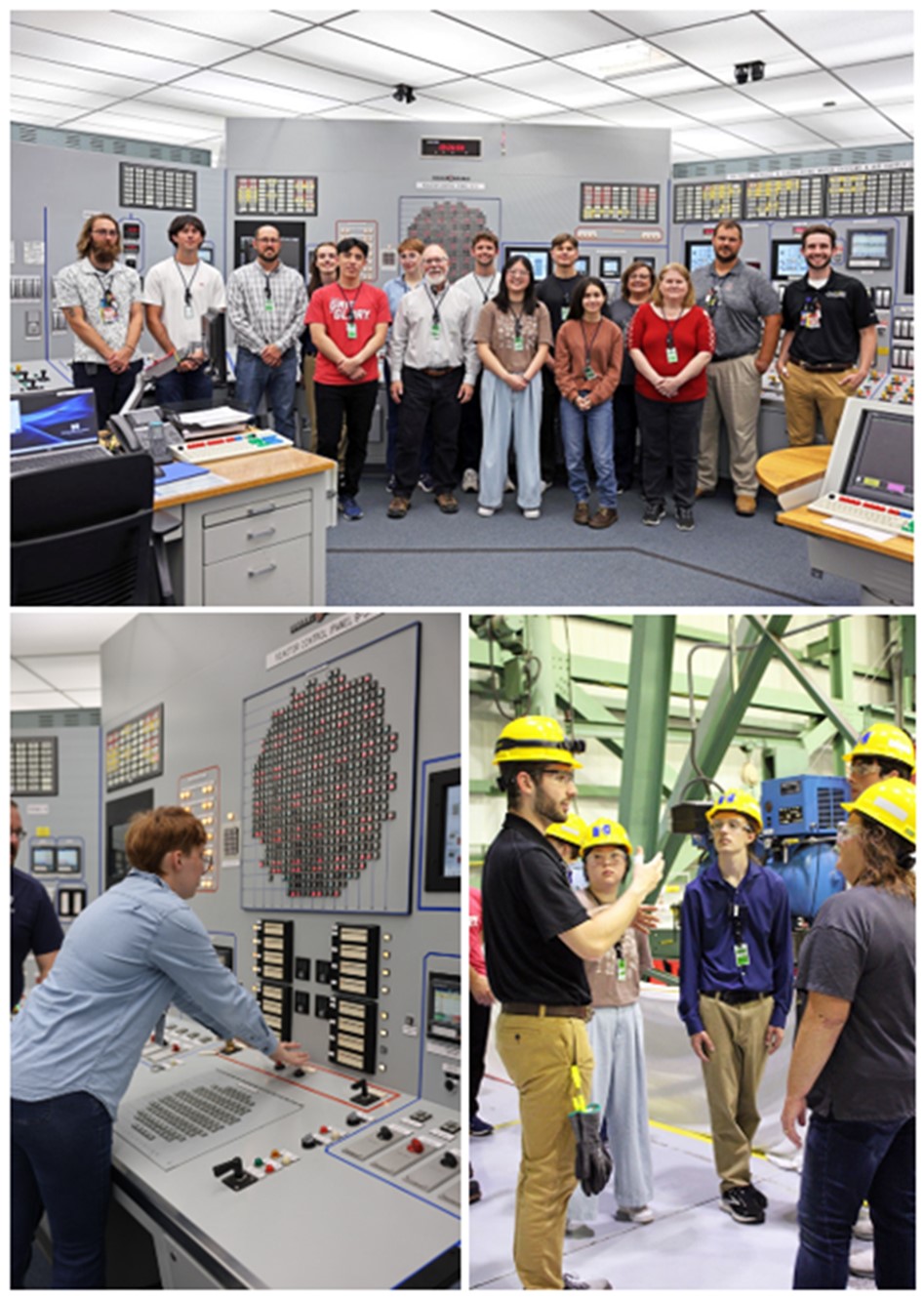
Interns and faculty from the Nebraska Center for Energy Sciences Research (NCESR) visited NPPD’s Cooper Nuclear Station (CNS) on July 9 to learn about safe, reliable, emissions-free nuclear energy and how the station has generated it for over fifty years.
The site tour started with a presentation led by Nuclear Engineer Supervisor Eric Wilke that included the background and history of CNS, how a boiling water reactor generates nuclear power, and the value of existing nuclear power plants and the growing interest in advanced nuclear options. After the presentation, Wilke, Design Engineer Jacob Patrick, and Design Electrical Engineer Steven Thiem escorted the NCESR team to the Protected Area, where they received an interactive demonstration in the Control Room Simulator. While in the Training Building, the tour leaders explained the control rod and fuel bundle mock-up displays and showed the group the Independent Spent Fuel Storage Installation. Additional tour stops included the reactor building’s refuel floor, control room corridor, turbine building, emergency diesel generator and switchyard. The tour concluded with lunch and a question-and-answer session.
In 2024, CNS celebrated fifty years of commercial operation. In those fifty years, CNS generated approximately 275 million MWhs of carbon-free electricity, eliminating emissions of approximately 275 million tons of CO2 into the atmosphere.
In June 1968, NPPD (known as Consumers Public Power District at the time) received permission to begin construction of CNS, using more than 90,000 cubic yards of concrete and 10,000 tons of steel. The plant started commercial operation on July 1, 1974, and its General Electric BWR/4 reactor can generate a nominal 800-MWhs of electricity.
CNS received a license renewal from the Nuclear Regulatory Commission (NRC) in November 2010, extending the operating license to January 2034. NPPD’s board of directors authorized management to pursue a subsequent license renewal that, if approved by the NRC, would extend the operating license to January 2054.
Since its inception, CNS has achieved many notable accomplishments. In 1998, it was the first plant in the U.S. to load nuclear fuel containing uranium provided under the Megatons to Megawatts Program. That program, in which uranium removed from nuclear weapons of the former Soviet Union was turned into low-enriched uranium and then into fuel, helped make the world safer and powered Nebraska’s economy.